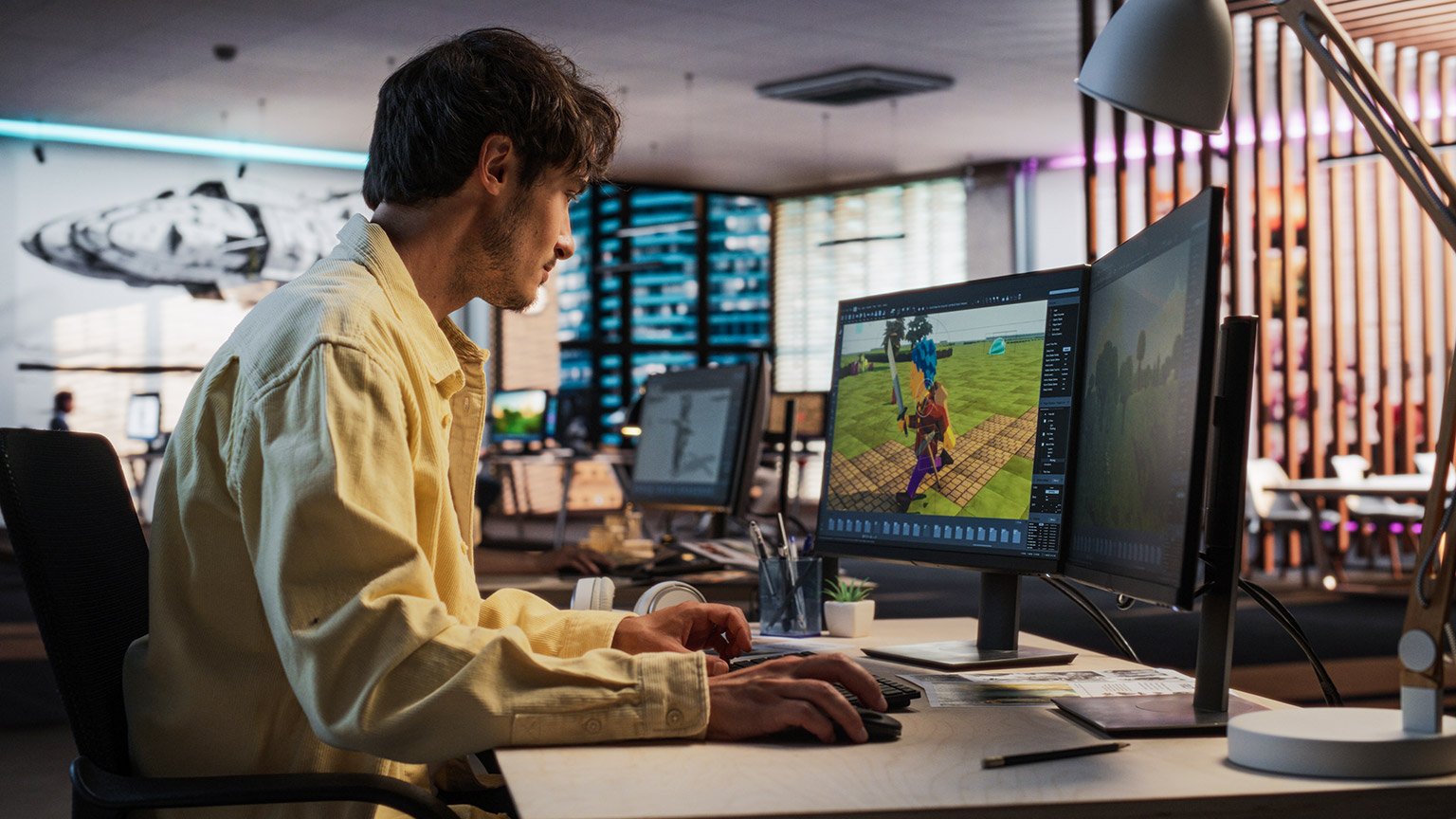Now that you have gained fundamental animation knowledge and skills, it is time to dive into Digital Production.
In this third module, practical learning tasks will hone your skills in creating dynamic 3D assets. You will use industry software including:
- Autodesk Maya for modelling and texturing 3D assets
- Adobe Photoshop for painting textures
- Adobe Substance 3D Painter for creating textures and texture maps
- Autodesk Mudbox for digitally sculpting surface details in a model.
As you progress, you'll learn the secrets of indirect and direct lighting and explore the intricacies of rendering processes and systems.
The module helps you cover six topics:
- Maya Terminology
- Modelling
- Texturing
- Lighting and Rendering
- Sculpting
- Asset Creation Assignments
The fine print
This module supports the following learning outcomes for you to achieve:
- Apply a range of creative software tools and processes in the creation of design and animation assets within a multidisciplinary animation production environment.
- Apply organisation, planning, self-management and response to feedback while conceptualising and developing digital production assets in response to animation project briefs.
- Evaluate and respond to feedback to improve aesthetic and or technical qualities of models and textures.
Work through topics in sequence
As you progress through this module, work through each topic and task sequentially, i.e. in the order they appear. The learning for this module has been developed specifically to work in sequence. You will find that as you progress, the completed learning tasks build upon each other, and some are key to help you with your two assessment submissions.
Learning tasks
When you focus on a learning task, read it carefully to check when you need to use a Forum to share your coursework (e.g. image or multimedia files) with your facilitator and fellow students - you'll get specific guidance on how to do this.
Using Forums is a great way of improving your animation skills through constructive feedback and helps you keep track of your progress through this module and prepare you for your assessments.
Manage your time
Your learning
Start your first topic within the first week of the module.
The total learning hours of this module are 300 hours. That's 30 hours per week, over ten weeks. This includes you:
- reading, watching, and completing learning tasks
- participating in or viewing Live Sessions
- preparing and completing assessments.
Learning hours are 'facilitated asynchronous', which means you complete your learning hours in your own time. However, you will need to be active in the Forums and Live Sessions.
Your assessments
You need to prepare your evidence for this module's two assessments throughout the ten weeks. We recommend you start this preparation in your first week and continue as you complete the indicated learning tasks.
The weeks that your assessment work needs to be submitted are:
- Week 4 - Assessment 1: (3D Workbook).
- Week 10 - Assessment 2: (Asset and Documentation).
Practice makes perfect
The practical nature of this module requires a high level of participation from you. Throughout your learning journey, focus on using the tools and resources in each topic as you work through the module.
Aim to complete all the activities. Doing so will:
- Help you in developing new skills and habits
- Prepare you for the assessments
- Build your confidence when completing assessment work.
The work you do by completing the learning tasks will prove very handy for the assessment work you will need to prepare and submit.

